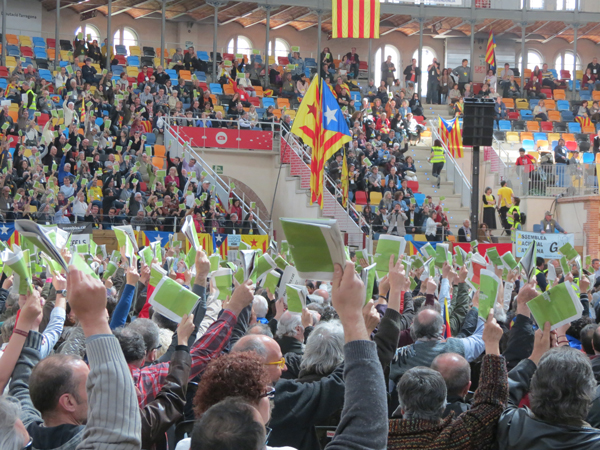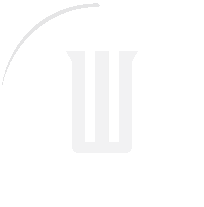06.04.2014 - 18:25
“What’s different this time?” an American journalist asked me yesterday, as we watched the members of the Catalan National Assembly vote on the road map that they hope will take them to the independence of Catalonia. “What has changed from the last time they tried this?” We were in the Tarraco Arena in Tarragona in southern Catalonia. People were chanting “in-inde-independencia!” and waving red, yellow, and blue independence flags as we chatted. I paused for a minute before I answered.
“It’s Europe,” I finally said. “You know, Catalans are remarkably conservative. They don’t like going out on a limb. They don’t like change. They’ve considered themselves to be a nation for a thousand years, and yet it’s only now that they feel strong enough to assert themselves. Being part of the European Union, part of Europe, has given them that strength. They believe in Europe, they believe in democracy, believe that if they play by the rules, they will succeed.”
Seven thousand members of the Catalan National Assembly gathered in Tarragona for the group’s annual meeting yesterday. The main item on the agenda was the approval of the “road map to independence” which came under fire in the Madrid press lately because it calls for a declaration of independence sometime around April 23, 2015 and explicitly recognizes that once independence is declared, ports and harbors will have to be secured. Several editorials in conservative papers accused the ANC of sedition and plotting a coup d’état, and Catalans were so outraged that the ANC’s membership has almost doubled in the two weeks following to its current tally of around 50,000.
The atmosphere in the arena was festive and there were dozens of volunteers with fluorescent green vests waiting to help seat people, hand out information and later to count up amendment votes. Volunteers are the foundation and the strength of the ANC, as evidenced by the Catalan Way last September in which more than 30,000 volunteers organized a million and a half people into a human chain 250 miles long.
This is a keenly, decidedly peaceful movement
Indeed, volunteerism is a key part in the most remarkable part about Catalonia’s surprising shift towards independence over the past three years: this is a keenly, decidedly peaceful movement; there are no bombs, no threats, no trashcan burning, no riots, no violence of any kind. President Mas said today, “Nothing is worth even a gram of violence.”
How do you attract attention without bombs?
But the ironic truth is that without violence, there is also little press coverage. Since Catalans know that international recognition is an extremely important piece of the puzzle, they have worked hard to find effective alternatives to attracting attention. And their answer has been to stage an incredibly wide variety of peaceful protests. In addition to the massive human chain mentioned above, they have created lipdubs highlighting their unique cultural heritage, lighted thousands and thousands of candles in multiple cities across their lands in the shape of their flag, or more recently a ballot box. They have ridden bikes, driven motorcycles, paraded nude on the beach. They chant at exactly 17 minutes and 14 seconds into each half of FC Barcelona football matches—unheard of until about two years ago. (Catalans lost their self-government when Barcelona fell to the Bourbons on September 11, 1714.) They spend hours on Twitter and Facebook and email, sharing articles and commenting on new developments. They stage concerts, and they organize mass demonstrations: three marches with more than a million people since 2010.
What’s left?
What’s left? That was one of the main questions for Saturday’s meeting. And the organizers kept members waiting until the end to reveal the blockbuster plans for Catalonia’s National Day—called the Diada, or ‘big day’—this year, September 11, 2014. It’s a long list.
On the Diada (September 11, 2014), in the morning:
Demonstrations in front of every single town and city hall in Catalonia to demand that local authorities commit their resources to making the November 9th referendum possible
Photograph of the demonstrations in front of each municipal government. These photographs will be shown on television during the day and will be accompanied by the reading of a manifesto.
Massive collection of signatures for the “Sign up to Vote” campaign at each of these town and city halls.
On the Diada (September 11, 2014), in the afternoon
Deliver the manifesto signed by each of the town and city halls in the morning
as well as the signatures gathered there to the Catalan Parliament in Barcelona.
Huge demonstration on two major Barcelona streets: Diagonal and Gran Via de les Corts Catalanes which will meet at the Plaça de les Glòries and so form a giant V for Via (Way), Voluntat (Will), Votar (Vote), and Victòria (Victory).
From September 12 to November 7:
Daily events from 17:14 to 20:14, in person and through social media in order to design the “country that we want” and so that the country will be a “country for everyone”. One of these events will be the closing ceremony of the “Sign up to Vote” campaign in which the signatures are presented to the Catalan Parliament.
Before September 11th:
During the summer each day mosaics will be formed in different regions of Catalonia that will call the attention of various world leaders—as well as diplomats, media, and the society of the corresponding country—who are considered key to the Catalan political process.
Catalans don’t want only their own independence, they want to be an example to the world. As Xavier Sala i Martin said in a recent conference in Gràcia, “in the next century, people will look back and say how barbaric it was that people in the 21st century still drew borders with war”. This time Catalans want to decide their border at the ballot boxes.



